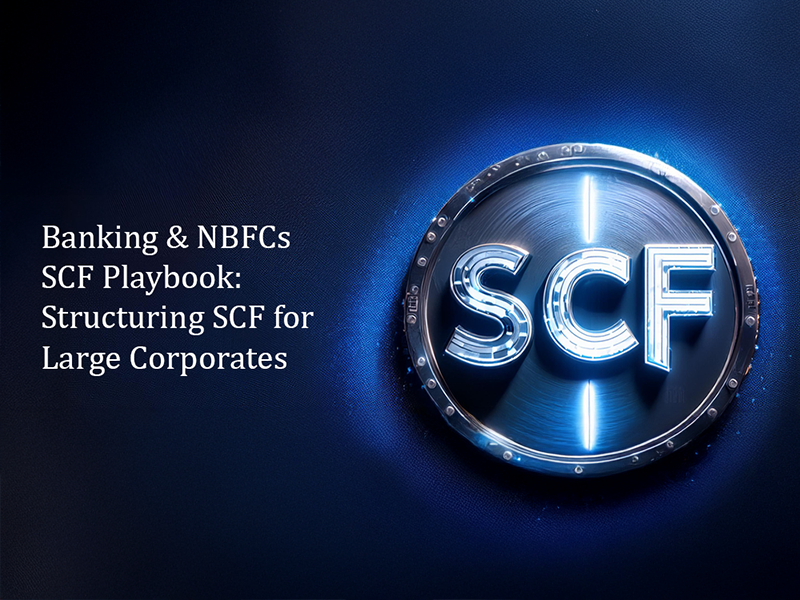What Does Innovation Look Like in Supply Chain Finance?
Let’s face it—when most people hear 'Supply Chain Finance' (SCF), they picture a dull, back-office function buried under spreadsheets and corporate jargon. But here’s the truth: SCF is where some of the most exciting financial innovations are happening today.
And no, we're not just talking about digitizing invoices (though, let’s be honest, that was long overdue). We’re talking about game-changing, tech-driven advancements that are transforming how businesses fund their supply chains and unlock capital like never before.
Traditionally, SCF was all about improving working capital—buyers stretched payment terms, suppliers got stuck waiting, and banks swooped in to provide liquidity. It worked, but let’s be real—it wasn’t exactly revolutionary.
Fast forward to today, and we’ve entered a new era of data-driven, decentralized, and hyper-efficient SCF solutions that benefit everyone in the ecosystem. So, what does innovation actually look like?
1. AI-Powered Risk Assessment
Gone are the days of relying on outdated credit scores. Today, AI and machine learning analyze real-time business data, transaction history, and even industry trends to dynamically assess risk and optimize financing rates.
2. Blockchain for Transparent Transactions
No more black-box financing. Blockchain technology is making SCF more secure, ensuring every party in the supply chain has visibility into transactions, reducing fraud, and streamlining approvals.
3. Embedded Finance in Supply Chains
Why should companies wait for banks to approve loans when they can integrate financing directly into their ERP systems? Embedded finance allows businesses to access SCF solutions within the platforms they already use, eliminating delays and inefficiencies.
4. Deeper Supply Chain Inclusion
Innovation isn’t just for the big players. New SCF platforms are reaching deeper into supply chains, providing financing options to Tier-2 and Tier-3 suppliers who were previously left out of the equation. This means more stability and resilience for global supply networks.
5. Dynamic Discounting & Real-Time Payments
Companies are moving beyond rigid payment cycles. Dynamic discounting enables buyers to offer early payments in exchange for discounts, while real-time payments ensure suppliers get their money instantly when they need it.
Innovation in SCF isn’t just about making existing processes faster—it’s about reinventing how supply chains are funded, who gets access to capital, and how risk is managed. The companies embracing these innovations? They’re not just optimizing working capital; they’re creating a real competitive edge.
So, if your SCF strategy still revolves around old-school payment terms and bank loans, it’s time for a rethink. Because the future of supply chain finance? It’s here, and it’s smarter than ever.
Supply Chain Finance used to be a one-size-fits-all affair. Big banks dictated the terms, buyers played hardball with suppliers, and getting access to liquidity was an uphill battle. But now? SCF platforms have flipped the script.
If you're still stuck in the old way of thinking—where SCF means only banks, lengthy paperwork, and inflexible financing—you're leaving money on the table. The modern SCF platform isn’t just a bridge between buyers and suppliers; it’s an entire ecosystem designed to optimize cash flow, reduce risk, and democratize financing. So, what’s changing?
1. No More Middlemen (or at Least, Smarter Ones)
Traditional SCF relied on big financial institutions to act as intermediaries, setting rigid rules and keeping a hefty slice of the pie. Today’s platforms connect multiple funders, from banks to alternative lenders to institutional investors, creating competition and better terms.
2. Faster Approvals, Zero Paperwork
Remember when getting working capital meant weeks of due diligence and endless paperwork? Modern SCF platforms automate credit assessments, integrate with ERP systems, and use AI-driven risk models to approve financing in minutes—not months.
3. Flexibility & Customization
Old SCF models were rigid. You either fit the mold, or you were out of luck. SCF platforms offer tailor-made financing options, from dynamic discounting to invoice-backed lending, ensuring every business—big or small—can optimize its cash flow.
4. Real-Time Visibility & Control
Wouldn’t it be nice to know exactly how much liquidity you can unlock at any given moment? New SCF platforms offer real-time dashboards, predictive analytics, and deep insights into working capital cycles, helping businesses make smarter financial decisions.
5. Inclusion for SMEs and Tier-2 Suppliers
SCF used to favor the big players, but platforms today are bringing much-needed liquidity to SMEs and lower-tier suppliers who were previously ignored. That’s not just good for individual businesses—it strengthens entire supply chains.
If you’re a CFO, treasurer, or supply chain executive, an SCF platform can help you:
- Unlock trapped capital without disrupting operations.
- Improve supplier relationships by offering better payment terms.
- Reduce financing costs by accessing multiple funders, not just banks.
- Gain real-time insights into working capital health.
- Future-proof your supply chain by ensuring liquidity at all levels.
The old SCF model is crumbling, and platforms are taking over. The choice is simple: Adapt and thrive, or stick to outdated models and watch your competitors pull ahead.
Welcome to the age of the SCF platform—where flexibility, speed, and efficiency rule the game.



